- News
- Reviews
- Bikes
- Components
- Bar tape & grips
- Bottom brackets
- Brake & gear cables
- Brake & STI levers
- Brake pads & spares
- Brakes
- Cassettes & freewheels
- Chains
- Chainsets & chainrings
- Derailleurs - front
- Derailleurs - rear
- Forks
- Gear levers & shifters
- Groupsets
- Handlebars & extensions
- Headsets
- Hubs
- Inner tubes
- Pedals
- Quick releases & skewers
- Saddles
- Seatposts
- Stems
- Wheels
- Tyres
- Tubeless valves
- Accessories
- Accessories - misc
- Computer mounts
- Bags
- Bar ends
- Bike bags & cases
- Bottle cages
- Bottles
- Cameras
- Car racks
- Child seats
- Computers
- Glasses
- GPS units
- Helmets
- Lights - front
- Lights - rear
- Lights - sets
- Locks
- Mirrors
- Mudguards
- Racks
- Pumps & CO2 inflators
- Puncture kits
- Reflectives
- Smart watches
- Stands and racks
- Trailers
- Clothing
- Health, fitness and nutrition
- Tools and workshop
- Miscellaneous
- Buyers Guides
- Features
- Forum
- Recommends
- Podcast
 TdFbikes
TdFbikesThe winning bikes of the 2018 Tour de France - the bikes that won every stage
The Tour de France is over for another year (sob!) so let's have a look at the bikes that were ridden to each stage and category win.
Now, before anyone says it, we know that it's the strength of the rider and the tactical decisions they make that determine results, but this is just a bit of fun, and who doesn't like an excuse to ogle high-end road bikes?
Stage 1: Fernando Gaviria, Quick-Step Floors, Specialized S-Works Venge
Quick-Step’s Fernando Gaviria became the first wearer of the yellow jersey in this year’s Tour de France after sprinting to victory in Fontenay-le-Comte on the new Specialized S-Works Venge, a disc brake bike that’s designed solely for electronic shift systems.
Find out all about the Specialized S-Works Venge here.
Stage 2: Peter Sagan, Bora-Hansgrohe, Specialized S-Works Venge
Different rider, same bike. Three-time world champion Peter Sagan won the sprint on his personalised Specialized S-Works Venge, gaining the yellow jersey in the process.
Stage 3: BMC Racing (team time trial), BMC Timemachine
BMC Racing won the 35.5km (22.1-mile) team time trial on BMC Timemachine bikes fitted with disc rear wheels and three-spoke front wheels from Shimano’s Pro sub-brand. BMC has just launched a version of this bike with disc brakes but the team riders were using rim brakes.
Stage 4: Fernando Gaviria, Quick-Step Floors, Specialized S-Works Venge
Crikey! It’s Fernando Gaviria for the second time and a Specialized S-Works Venge (see above) for the third time. This is getting silly!
Stage 5: Peter Sagan, Bora-Hansgrohe, Specialized S-Works Venge
Well, that’s four road stages and four wins for riders on the new Specialized S-Works Venge. Whereas stages one, two and four were classified as flat, this one to Quimper was hilly.
Stage 6: Dan Martin, UAE Team Emirates, Colnago V2-r
Daniel Martin hits the cobbles at the #TDF2018 with his V2r pic.twitter.com/15x4ZM83Xb
— Colnago (@Colnagoworld) July 20, 2018
At last, another brand gets a look in on a road stage, Dan Martin taking the stage on his Colnago V2-r (the Tweet above relates to Stage 9, but it's the same bike). It’s an aero road bike with direct mount brakes and a claimed frame weight of 835g – the same as the V1-r but with extra stiffness, according to Colnago.
Check out our Colnago V2-r first ride report
Stage 7: Dylan Groenewegen, Lotto NL-Jumbo, Bianchi Oltre XR4
#TDF2018
The Bianchi Oltre XR4’s are also ready for the next three weeks cruising through France.pic.twitter.com/mThWir42TP— LottoNLJumbo Cycling (@LottoJumbo_road) July 5, 2018
Dylan Groenewegen dominated the sprint to take victory in Chartres on his Bianchi Oltre XR4, a bike that features what’s called Countervail technology.
Get all the details in our review of the Bianchi Oltre XR4 here
Check out the special edition paint jobs on the bikes of Groenewegen and Primoz Roglic here
Stage 8: Dylan Groenewegen, Lotto NL-Jumbo, Bianchi Oltre XR4
It’s Groenewegen and his Bianchi Oltre XR4 for the second time in two days.
Stage 9: John Degenkolb, Trek-Segafredo, Trek Domane SLR Disc
Wow!
Listen to technical director @TrekTeamMatt explain the extensive preparations we have taken for #TDF2018 stage 9 tomorrow!
This is Part 1 of 2: pic.twitter.com/MAYVMBnfao— Trek-Segafredo (@TrekSegafredo) July 14, 2018
Trek-Segafredo’s John Degenkolb, winner of Paris-Roubaix in 2015, won over the cobbles on his Trek Domane SLR Disc (it's actually Bauke Mollema's bike in the video Tweet, above), a bike with front and rear IsoSpeed that’s specifically designed to filter our vibrations on all kinds of rough roads.
Check out our review of the Trek Domane SLR 6 which shares the same IsoSpeed technology
Stage 10: Julian Alaphilippe, Quick-Step Floors, Specialized S-Works Tarmac SL6
Julian Alaphilippe won the first mountain stage of this year’s Tour de France in Le Grand-Bornand on a Specialized S-Works Tarmac SL6. The sixth generation Tarmac has a focus on reduced weight, improved comfort and frame stiffness and, for the first time, reduced drag.
Read our review of the Specialized S-Works Tarmac SL6
Stage 11: Geraint Thomas, Team Sky, Pinarello Dogma F10 X-Light
A touch of love from @Pinarello_com for @GeraintThomas86 #TDF2018 pic.twitter.com/WQ0FmXl2Wc
— Team Sky (@TeamSky) July 19, 2018
The mountain stage from Albertville to La Rosière Espace San Bernardo saw a win for Geraint Thomas on his Pinarello Dogma F10 X-Light, a very similar bike to the one he rode in last year’s race – given yellow touches after the stage to mark his status as race leader.
Here’s a video look at the Pinarello Dogma F10 X-Light ridden by teammate Wout Poels in this year’s race.
Stage 12: Geraint Thomas, Team Sky, Pinarello Dogma F10 X-Light
REPORT/REACTION: Geraint Thomas made it two wins from two stages after a spectacular winning performance on Alpe d'Huez
> https://t.co/V85TuGV7b0 pic.twitter.com/NafpOxvHLf
— Team Sky (@TeamSky) July 19, 2018
G makes it two from two with a win on Alpe d’Huez.
Stage 13: Peter Sagan, Bora-Hansgrohe, Specialized S-Works Venge
Back on the flat and Peter Sagan takes his third win of the race on his glittery Specialized S-Works Venge (see above).
Stage 14: Omar Fraile, Astana, Argon 18 Gallium Pro
Short part of our first training in France! @LeTour #AstanaProTeam #TDF2018 pic.twitter.com/1faAHgAln0
— Astana Pro Team (@AstanaTeam) July 5, 2018
Spanish rider Omar Fraile won the hilly 188km (117-mile) stage from Saint-Paul-Trois-Châteaux to Mende on his Argon 18 Gallium Pro, a bike that’s designed to be lightweight and stiff as opposed to aerodynamically tuned. It has a claimed frame weight of 794g (size medium, painted, including hardware).
Stage 15: Magnus Cort, Astana, Argon 18 Gallium Pro
After yesterday's rest day, including some interviews, we're back in business today!#TDF2018 @bettiniphoto pic.twitter.com/xIIWSAwhF2
— Astana Pro Team (@AstanaTeam) July 24, 2018
Well, whaddya know? Magnus Cort followed up his teammate's win with victory in Carcassonne after making it into the lead group and easily outsprinting his rivals, again on an Argon 18 Gallium Pro.
Stage 16: Julian Alaphilippe, Quick-Step Floors, Specialized S-Works Tarmac SL6
Julian Alaphilippe took his second stage win of this year’s Tour as the race entered the Pyrenees, again on his Specialized S-Works Tarmac SL6 (see above).
Stage 17: Nairo Quintana, Movistar, Canyon Ultimate CF SLX
#RodamosJuntos #TDF2018 #TDFchill pic.twitter.com/lM82lZIvDu
— Movistar Team (@Movistar_Team) July 23, 2018
Nairo Quintana took a solo victory on the Col du Portet on his Canyon Ultimate CF SLX. Movistar riders have the choice of the Aeroad CF SLX aero road bike or the Ultimate CF SLX, which is the lightweight option.
Here is the Canyon Ultimage CF SLX belonging to teammate Alejandro Valverde.
Check out our unboxing of the 2018 Canyon Ultimate CF SLX 9.0
Stage 18: Arnaud Demare, Groupama-FDJ, Lapierre Aircode SL 900
French brand Lapierre picked up its first stage win of the year when Arnaud Demare sprinted to victory in Pau.
Stage 19: Primoz Roglic, Lotto NL-Jumbo, Bianchi Oltre XR4
Slovenia's Primoz Roglic got away from a select group of climbers on the final descent of the day to take Lotto NL-Jumbo's third stage win of the race and move himself into a GC podium position.
Stage 20: Tom Dumoulin, Team Sunweb, Giant Trinity Advanced Pro
Fastest of today; our @_ETXEONDO FALCON skin suit! It’s a pleasure to win so close to Etxeondo’s HQ! #KeepChallenging #TDF2018 pic.twitter.com/3RTW9OiILI
— Team Sunweb (@TeamSunweb) July 28, 2018
The world time trial champion took the win just one second ahead of Chris Froome, and all but secured himself the runner-up spot in GC.
Stage 21: Alexander Kristoff, UAE Team Emirates, Colnago Concept
Victorious viking: #UAETeamEmirates’ @Kristoff87 takes final stage win on #TDF2018 . @DanMartin86 picked up the award for the most combative rider.
Full report and reactions: https://t.co/F0OI89i02t
Bettini & Fizza pic.twitter.com/Po1RDmyzeI
— @UAE-TeamEmirates (@TeamUAEAbuDhabi) July 29, 2018
It was Norway's Alexander Kristoff who outgunned the rest to take the most prestigious sprint of them all on the Champs Elysees.
Stage wins by brand
If the Tour de France had a constructors' championship like Formula 1, Specialized would have won it. Like Canyon, it supplies bikes for two teams competing in the race. These are the number of stage wins per bike brand:
Specialized 7
Bianchi 3
Argon 18 2
Colnago 2
Pinarello 2
BMC 1
Canyon 1
Giant 1
Lapierre 1
Trek 1
General Classification: Geraint Thomas, Team Sky, Pinarello Dogma F10 X-Light & Bolide
Geraint Thomas secured overall victory mostly on his Pinarello Dogma F10 X-Light. Check it out above or go to our full article here.
Points: Peter Sagan, Bora-Hansgrohe, Specialized S-Works Venge
The right bike for the right day! @letour @iamspecialized #Venge (Photos @BrakeThrough) pic.twitter.com/7tHvm0KI7v
— Peter Sagan (@petosagan) July 29, 2018
Sagan secured the green jersey for a sixth time mostly riding a Specialized S-Works Venge – a version with a new paint job for the final stage.
Climber: Julian Alaphilippe, Quick-Step Floors, Specialized S-Works Tarmac SL6
After a good night's sleep, we are ready to parade this dazzling @iamspecialized bike with polka dot touches on the streets of Paris.#TDF2018
Photo: Sigfrid Eggers pic.twitter.com/q0IHjvvpWd
Alaphilippe secured the King of the Mountains title on his S-Works Tarmac SL6.
Youth: Pierre Latour, AG2R La Mondiale, Factor One, O2 & Slick
@letour - Etape 4 / Stage 4
Full aero#ALLEZALM - #FactorOne - @FactorBikes - @Mavic pic.twitter.com/MaacKIpXBo
— AG2RLM Pro Cycling Team (@AG2RLMCyclisme) July 10, 2018
Pierre Latour, 24, won the Youth category on bikes from British brand Factor.
Combative: Dan Martin, UAE Team Emirates, Colnago V2-r
Wow. Speechless. Thank you pic.twitter.com/wdlzs4Ueif
— Dan Martin (@DanMartin86) July 12, 2018
Dan Martin launched attack after attack on his Colnago V2-r, earning himself a stage victory and eighth place in GC.
Mat has been in cycling media since 1996, on titles including BikeRadar, Total Bike, Total Mountain Bike, What Mountain Bike and Mountain Biking UK, and he has been editor of 220 Triathlon and Cycling Plus. Mat has been road.cc technical editor for over a decade, testing bikes, fettling the latest kit, and trying out the most up-to-the-minute clothing. He has won his category in Ironman UK 70.3 and finished on the podium in both marathons he has run. Mat is a Cambridge graduate who did a post-grad in magazine journalism, and he is a winner of the Cycling Media Award for Specialist Online Writer. Now over 50, he's riding road and gravel bikes most days for fun and fitness rather than training for competitions.
Latest Comments
- Rome73 36 min 33 sec ago
that “commuters simply do not need a bike worth more than £1,000”....
- muhasib 5 hours 17 min ago
"Clunie, who was stopped at the lights at the time of the crash,"...
- mikeclarke 7 hours 54 min ago
Sheffield has an appalling road safety record, in particular child deaths caused by cars is above average. A campaign to increase the number of...
- Miller 8 hours 58 min ago
I'm reading this as the komoot founder cashing out? Tough on the staff who'll get a redundancy notice and not a payout.
- Rendel Harris 9 hours 25 min ago
You can pick them up for £129 at Cyclestore now with free postage.
- David9694 11 hours 56 min ago
I certainly don't put every story about every fatal crash I encounter, this pair just got me curious, like why are 90 year olds still driving and...
- Vo2Maxi 12 hours 29 min ago
Over 25 years ago now, I was on the Ideal Travel winter training camp in Majorca....
- chaos 12 hours 37 min ago
Great news for titanium and steel owners like me. My metal rim bikes roll on. Sadly, my venture into carbon territory is a different story. Anyway,...
- Sredlums 13 hours 20 min ago
I honestly can not yet get my head around how this thing is supposed to work. What I do know is that it does not have the chain on each side,...
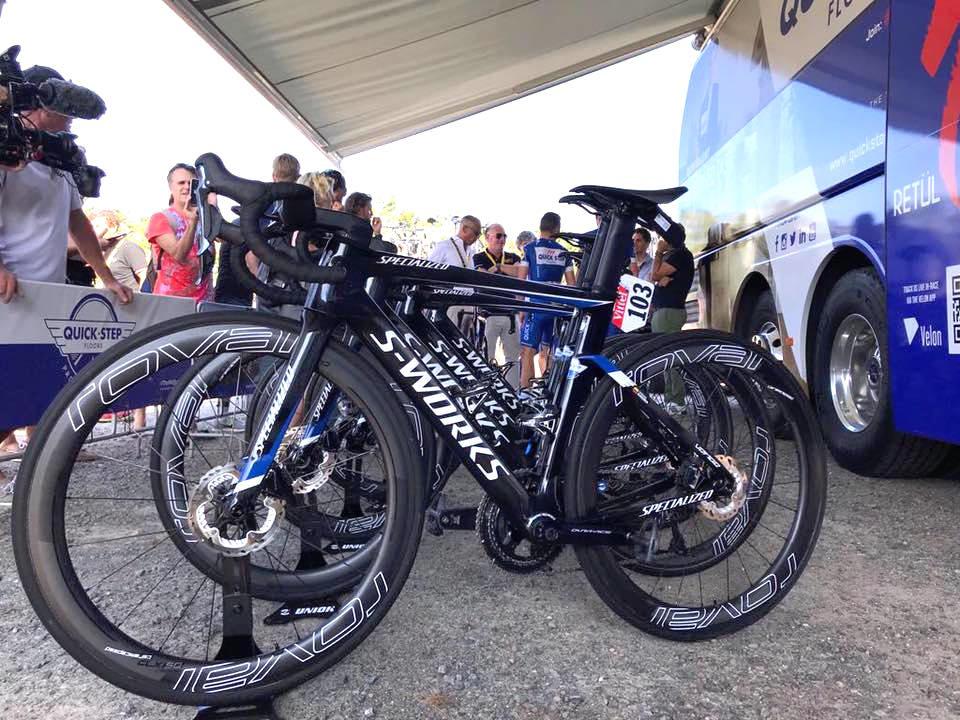
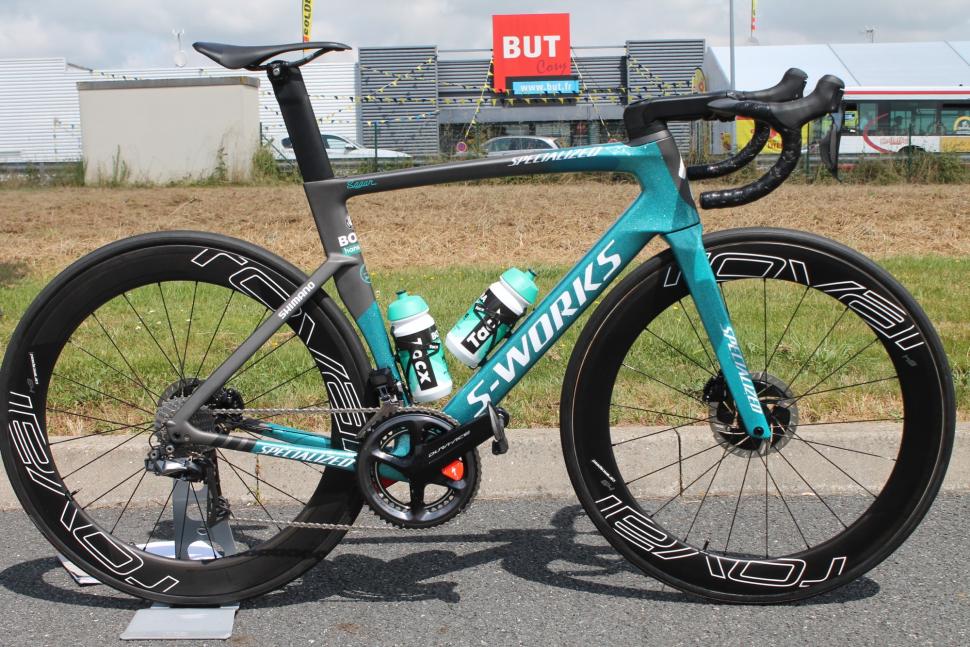
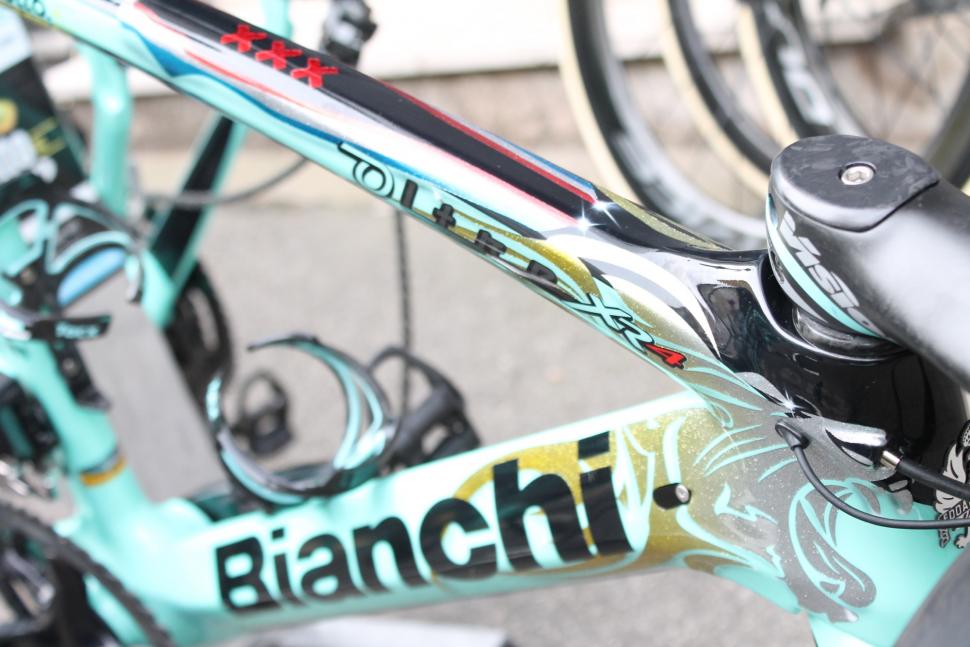


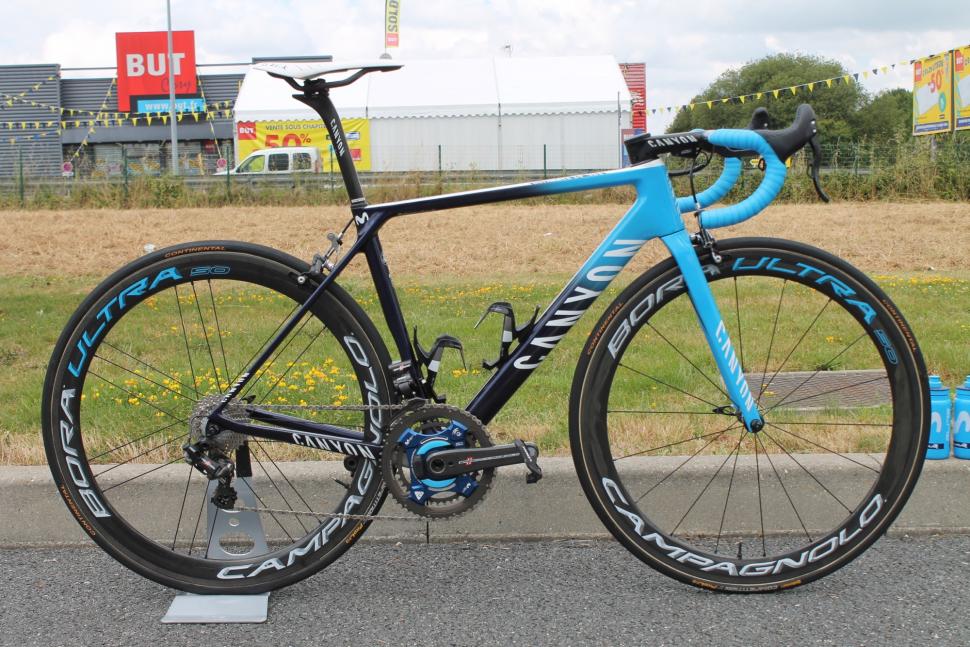
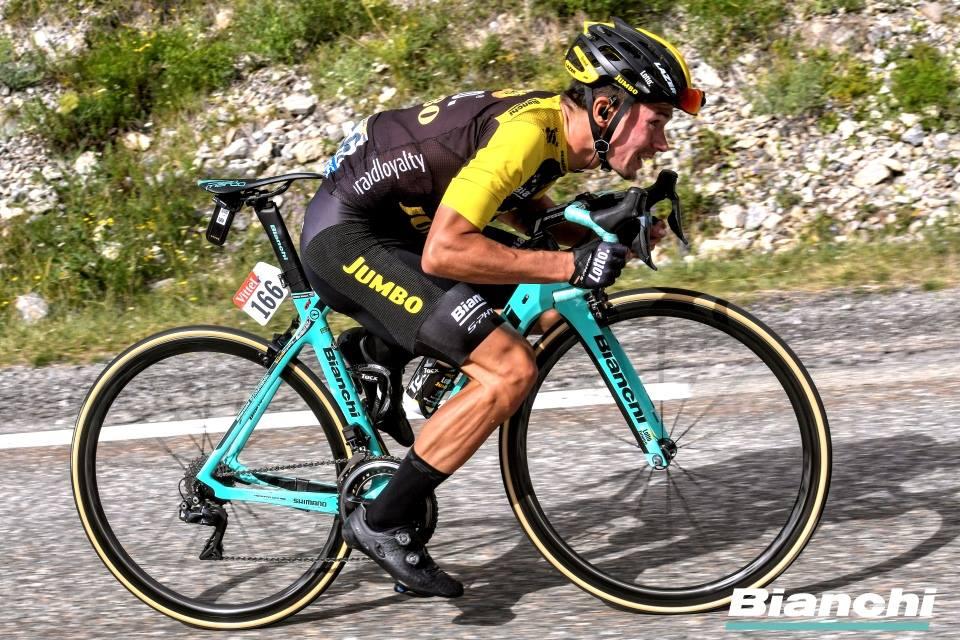
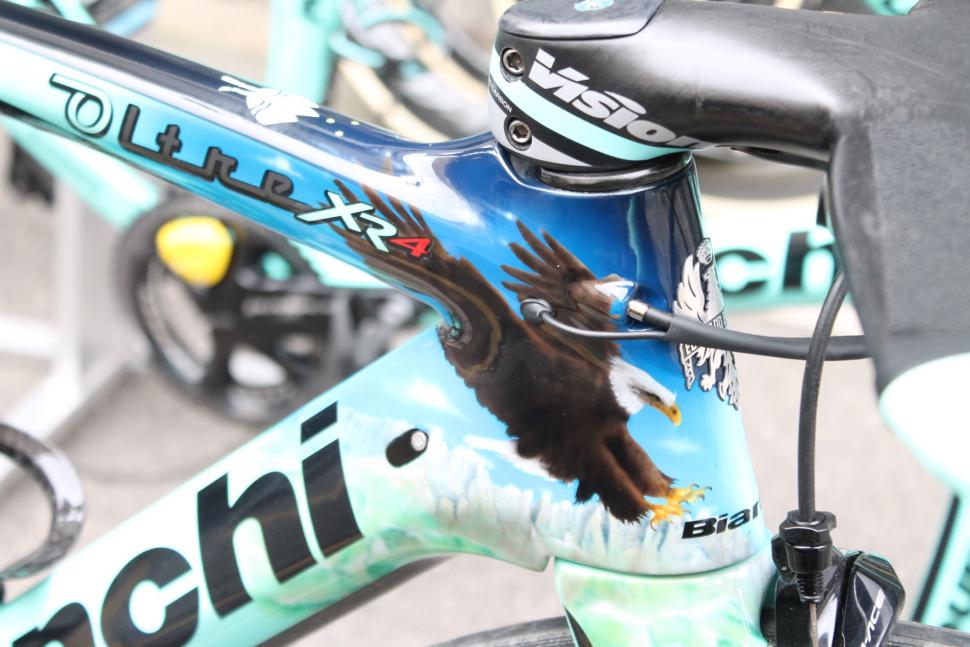

Add new comment
8 comments
Are you referring to F1 or cycling in that statement?
There are even fewer clutch manufacturers - AP and Sachs. "Engines" are supplied as complete PUs. Some teams manufacture their own gearboxes, some don't. Haas even use Ferrari suspension, right off the shelf!
A team is only required to manufacture eight so-called "listed" parts itself - and they're all bodywork/aero surfaces.
Wow! A story on road.cc that mentions Argon 18, not once, but twice.
Someone will be fired at road.cc for sure, after that slipup.
It is about engine more than chassis.
What a useless article...
Wow, get over yourself...
What a useless comment...
Mercedes, Force India and Williams have the same engine.
Ferrari, Haas and Sauber have the same engine.
How can it possibly be about the engine?
Because they aren't the sole factor in power, maybe you forgot but that engne needs a clutch, a gearbox, an MGU, the energy store unit, the turbo, so they aren't all the same nor how effective/efficienct they are. So despite same engines they perform differently by loads add in a different chassis/aerodynamics which are a bigger aspect for so many different reasons in high speed motor racing which in turn effects how the car drives on different tracks and of course the different tyres.
So yes engines in F1 have a massive impact on who wins, but also lots of other aspects combined that changes matters and of course the driver but they (the drivers) are closer in ability than the cyclists in racing circles, so absolutely it is more about the 'engine' in cycling and much less than the chassis.
Did you read the article?:
"Now, before anyone says it, we know that it's the strength of the rider and the tactical decisions they make that determines results, but this is just a bit of fun, and who doesn't like an excuse to ogle high-end road bikes?"
Always thought it was the rider who propelled to the goal...